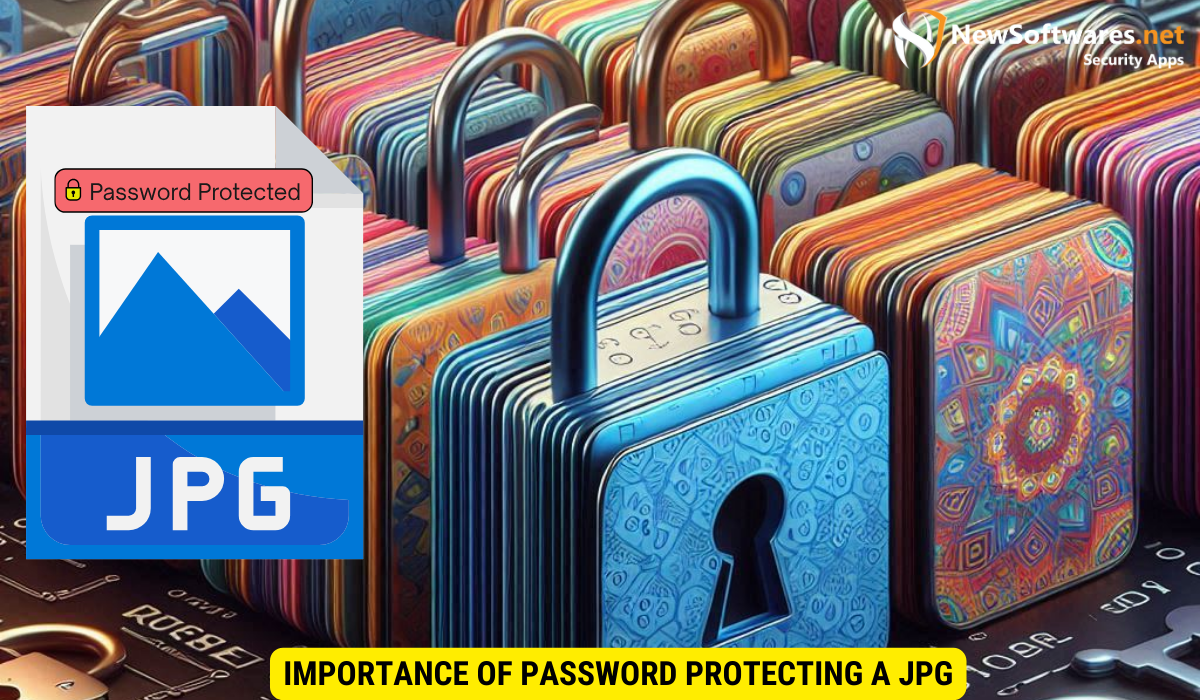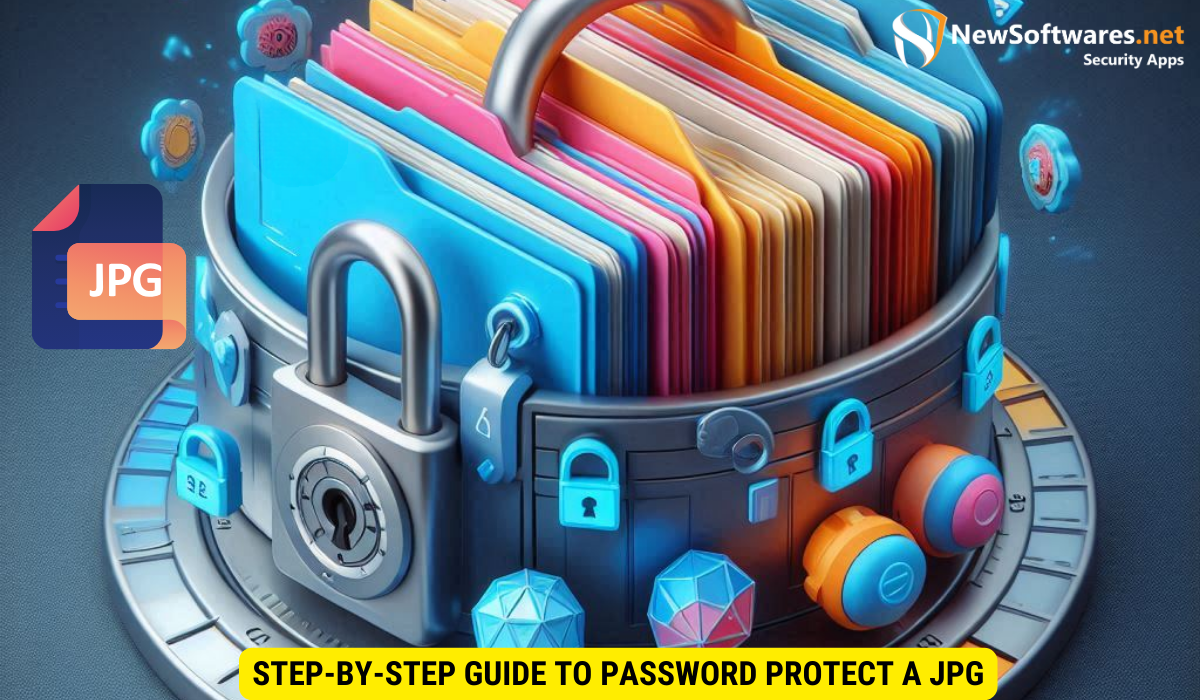In today’s digital age, where the security of personal information is of paramount importance, it is crucial to understand how to protect our sensitive files. One such file format that often contains sensitive information is the JPG (Joint Photographic Experts Group) file format. In this article, we will delve into the process of password protecting a JPG file and discuss the importance of this security measure.
Importance of Password Protecting a JPG

In order to comprehend the necessity of password protecting a JPG file, it is essential to understand the risks associated with leaving it unprotected. Let’s explore some of these risks:
The Risks of Unprotected Files
When a JPG file is not password protected, anyone with access to it can easily view its contents. This poses a significant privacy concern, especially if the file contains personal or confidential information.
Moreover, such files are susceptible to unauthorized modifications or tampering. Imagine someone altering a picture without your knowledge, potentially leading to misrepresentation or other negative consequences.
Furthermore, unprotected JPG files are vulnerable to being shared or distributed without your consent. This could result in your images being used in ways you did not intend, violating your rights and potentially causing harm.
Benefits of Password Protection
By password protecting your JPG files, you add an extra layer of security to prevent unauthorized access. This ensures that only individuals with the correct password can view or modify the encrypted file.
Additionally, password protection helps in maintaining the integrity and originality of the file, safeguarding it from any unauthorized alterations. It also gives you control over who can access the file, allowing you to share it securely with trusted individuals while keeping it confidential from others.
Basic Concepts of Digital File Security
Before diving into the specific steps of password protecting a JPG file, it is important to familiarize yourself with some fundamental concepts of digital file security.
Understanding digital file security is essential in today’s interconnected world where data breaches and cyber threats are prevalent. It involves implementing measures to protect digital information from unauthorized access, ensuring the confidentiality, integrity, and availability of the data.
What is Encryption?
Encryption is the process of converting readable information into an encoded format that can only be deciphered by authorized individuals with the correct decryption key. It is the backbone of password protection and ensures the confidentiality of sensitive information stored within the JPG file.
Encryption algorithms use complex mathematical calculations to scramble data, making it unreadable to anyone without the decryption key. This ensures that even if a malicious actor gains access to the JPG file, they would not be able to view its contents without the key.
Different Levels of Digital Security
When it comes to digital file security, various levels of protection are available. It is crucial to choose the appropriate level based on the sensitivity of the file and the potential risks involved. Some commonly used security measures include file encryption, password protection, and digital signatures.
File encryption involves converting the contents of a file into an unreadable format, adding an extra layer of security. Password protection requires users to enter a password to access the file, ensuring only authorized individuals can view its contents. Digital signatures provide a way to verify the authenticity and integrity of a file, confirming that it has not been tampered with since it was signed.
Step-by-Step Guide to Password Protect a JPG

Now that we have covered the basics, let’s delve into the step-by-step process of password protecting a JPG file.
Ensuring the security and privacy of your digital files is crucial in today’s interconnected world. By password protecting your JPG files, you add an extra layer of defense against unauthorized access, safeguarding your sensitive information and personal data.
Choosing the Right Software
The first step is to select a reliable software program that specializes in file encryption and password protection. Do thorough research, read user reviews, and ensure that the software is compatible with your operating system before making a decision.
Look for features such as strong encryption algorithms, password strength indicators, and compatibility with various file formats. It’s essential to choose a reputable software provider with a track record of delivering secure solutions to protect your files effectively.
Process of Encrypting a JPG File
Once you have chosen the appropriate software, follow these steps to password protect your JPG file:
- Open the software and navigate to the encryption features.
- Select the JPG file you wish to protect.
- Choose a strong and unique password that is difficult to guess.
- Initiate the encryption process and wait for it to complete.
- Verify that the JPG file is now password protected by attempting to open it without the correct password.
Remember to store your password in a secure location or use a reputable password manager to ensure you do not lose access to your encrypted JPG file. Regularly update your password and consider using multi-factor authentication for an added layer of security.
Common Issues and Solutions in Password Protecting a JPG
Although password protecting a JPG file is an effective security measure, it is not without its challenges. Let’s explore some common issues that may arise and their potential solutions:
Forgotten Passwords
One of the most common issues faced by users is forgetting the password to their password-protected JPG file. To overcome this, it is essential to create a secure password and store it in a secure location, such as a password manager. Additionally, consider creating a password hint that will help jog your memory without compromising security.
File Corruption Concerns
In rare instances, the encryption process may result in file corruption, rendering the JPG file inaccessible. To minimize the risk of this occurring, always ensure that you have a backup of the original file before initiating the encryption process. This way, even if the encrypted file becomes corrupted, you can restore it from the backup.
Another issue that users may encounter when password protecting a JPG file is compatibility. Not all image viewing or editing software supports password-protected JPG files, which can lead to frustration when trying to access or modify the file. To address this, consider using a widely supported encryption method or providing clear instructions on how to access the file for users who may not be familiar with password-protected files.
Security Concerns
Ensuring the security of a password-protected JPG file is paramount, as any breach could compromise sensitive information or personal data. It is crucial to regularly update the password for the file and avoid using easily guessable passwords. Additionally, consider implementing two-factor authentication for an added layer of security, especially if the JPG file contains highly confidential information.
Maintaining Your Password Protected JPG
Once you have successfully password protected your JPG file, it is important to adopt good habits to maintain its security.
Regularly Updating Your Password
As a best practice, periodically update your password to ensure that it remains secure. Avoid reusing passwords and strive to create strong, unique passwords that are not easily guessable.
Backing Up Your Protected Files
In order to prevent any potential data loss, regularly back up your password protected JPG files. This ensures that even if the original file or the encrypted version becomes inaccessible, you have a copy stored securely elsewhere.
Key Takeaways
- Unprotected JPG files are vulnerable to unauthorized access and tampering.
- Password protection adds an extra layer of security and safeguards the integrity of the file.
- Encryption is the process of converting readable information into an encoded format.
- Choose a software program specialized in file encryption and password protection for JPG files.
- Maintain good habits, such as regularly updating passwords and backing up protected JPG files.
FAQs
1. Are JPG files secure without password protection?
No, without password protection, JPG files are vulnerable to unauthorized access and tampering. Password protection adds an essential layer of security.
2. Can I use any password to protect my JPG file?
No, it is important to choose a strong and unique password that is not easily guessable. Avoid using common words or personal information.
3. What if I forget the password to my password-protected JPG file?
If you forget the password, it may be challenging to recover the files. To avoid this, create a secure password and consider storing it in a password manager or using a password hint.
4. Is there any way to recover a corrupted password-protected JPG file?
If a password-protected JPG file becomes corrupted, it may be difficult to recover the data. To minimize the risk, always keep a backup of the original file and store it securely.
5. Are there any alternative methods to protect JPG files?
Yes, apart from password protection, other methods such as file encryption and digital signatures can also be used to enhance the security of JPG files.
Conclusion
Protecting your sensitive JPG files with a password is an integral aspect of ensuring their security. By understanding the risks of leaving files unprotected and following the steps provided above, you can effectively safeguard your privacy and maintain the integrity of your JPG files.
